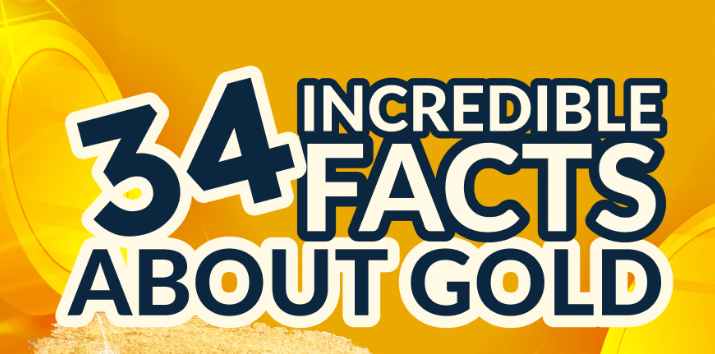
What is a Gold IRA Rollover?
No precious metal is revered the way gold is — be it in the world of jewelry, manufacturing, or investing. Though gold pretty much never constitutes a significant chunk of an investment portfolio (due to its inability to grow quicker than other investments, such as stocks and funds), most investors like to invest some money in the precious metal just in case.
Gold glitters. It’s durable and tangible. Most importantly, it serves as a hedge during a financial crisis. When inflation is high, or there’s political upheaval, gold either maintains its value or goes up. People throng to the metal during such situations, to only push the prices further up.

Savvy investors do not wait for an economic slump to realize the value of holding gold in their investment or retirement savings portfolio. They buy gold in the metal and/or as gold stocks. They either make separate gold purchases or carry them out under a gold IRA.
So, what is a gold IRA? How does it work? If you have a retirement savings account or retirement portfolio, should you transfer funds from there to a gold IRA?
Keep reading to find the answers to all those questions and lots more.
Table of Contents
IRA Rollover: A Brief Intro
An IRA rollover is essentially moving funds from a qualified plan, such as a 401(k), to an IRA (individual retirement account).
A “qualified plan” is any retirement account or retirement savings plan approved by the IRS or which conforms to Section 401(a) of the Internal Revenue Code. Employees and employers contribute funds to a 401(k) or any qualified plan. Other qualified plans are a 403(b) and Keogh (HR-10). Qualified plans typically hold money in investment vehicles such as stocks, mutual funds, money market funds, real estate, etc.
These plans are employer-sponsored, tax-deferred retirement accounts falling outside the ERISA (Employee Retirement Income Security Act) guidelines. Non-qualified programs typically offer high-paid or higher management executives an extra retirement savings option. Examples include executive bonus plans and deferred compensation plans.
People who are not conventionally employed and would like to save for retirement and not lose the tax benefits attached to a 401(k) or a 403(b) consider an IRA. An IRA is not a qualified plan per se, but it offers pretty much the same benefits as one — including the tax advantages. SIMPLE (Savings Incentive Match Plan for Employees) IRA, however, is a qualified plan.
When Does an IRA Rollover Take Place?
An IRA rollover usually happens when an employee who has quit their job or switched jobs has decided against:
- keeping their retirement savings in the 401(k) plan or any other qualified plan with their previous employer;
- transferring the funds from the erstwhile employer-sponsored retirement plan to the new employer’s savings plan;
- cashing out their 401(k), 403(b), etc.
Kindly note, when funds are transferred from one IRA arrangement to another, it’s called an “IRA transfer” and not a “rollover”. For example, moving funds from a Roth IRA to another Roth IRA is an IRA transfer. When funds from a 401(k) or a Roth IRA are rolled to a gold IRA, it’s a rollover.
Also, only one indirect rollover is permitted in a year or 12-month period, even if you’ve got multiple IRAs to your credit. A transfer, however, can be carried out an unlimited number of times in a given period.
Types of IRA Rollover
An IRA rollover can be direct or indirect. A direct rollover is a straight transfer of funds from a 401(k) or any tax-deferred plan by your former employer or plan provider. The fundholder doesn’t get to see the money in their bank account.
With an indirect transaction, the money from the account is deposited into the account holder’s bank account. The individual has up to 60 days to move the funds to another IRS-approved retirement plan so that they do not incur taxes and a penalty on the prematurely withdrawn money if not 59½ years or older.
Not to mention, the burden of making the rollover rests on the shoulders of the account holder with an indirect funds rollover. During the 60-day window, the account owner could spend the money for personal use, provided the money is reimbursed within the stipulated time.
Indirect rollovers make sense only if there are immediate expenses to take care of, and a direct rollover, for some reason, is not feasible.
The Declining Production of Gold
World gold supplies have been slowly decreasing. In 2019, the global gold production was approximately 3,531 tonnes. In 2018, it was 3,567 tonnes. The period 2018-2019 was the first time since 2008 during which gold mine production had declined year on year.
However, the slight falloff doesn’t denote gold production has reached its peak or will continue to drop every year. In other words, the downward trajectory is not significant, but the output has indeed flattened. There’s still some time to reach a point wherein there’s a dramatic decrease.
What Does the Future Hold?
Gold mining is several centuries old. After all these years, gold mining has no doubt reached a certain saturation point.
Mining companies with decades of experience behind them are not outputting gold with the same enthusiasm as they did a few years ago, thanks to how increasingly difficult it’s become to find new gold. Plain exhaustion or the fact that the returns for the efforts put in are plummeting is also a major factor for the insipidness of the firms.
The gold already discovered was much easier to find compared to gold that’s still hiding underneath. A dramatic decrease in production is not very far away.
Though new mining companies are continually cropping up, they haven’t come up with much gold yet. Most of the gold production currently taking place is still courtesy of the older mines. Since mining is a cost- and capital-intensive exercise, the newer, smaller mines do not possess the plant and equipment to tap into underground gold efficiently enough.
The Environment Hazard
Dirty mining practices such as cyanide heap leaching and open-pit mining ravage landscapes, contaminate water supplies and destroy ecosystems. Toxic substances such as mercury and cyanide get released into the atmosphere when gold is not mined responsibly. On the other hand, placer mining is more sustainable due to its small-scale and less invasive nature.
Also, many gold mines in different parts of the world are guilty of dumping toxic wastes into water bodies directly. For instance, the Papua New Guinea-based Lihir gold mine gets continually critiqued for its irresponsible gold mining operations.
Gold mining leads to improved infrastructure, employment opportunities, and tax revenues when performed in adherence to high environmental, safety, and social standards. Sustainable mining can also generate foreign exchanges and drive FDI.
The environmental concerns surrounding the mining of gold are on the rise. Countries are framing and implementing tighter ecological policies for environmental management reasons. Cyanide usage, for instance, is highly regulated in countries like China, forcing many mining firms to cut down on their production.
Gold Recycling is a Challenge
Recycling gold is a lot easier than mining new gold. But the way the yellow metal is getting used and likely to be used in the foreseeable future will majorly impact how efficiently gold could be recycled.
The technology industry employs gold in a manner that renders recycling the precious metal tricky. Because gold is used in small quantities or as specks in electronic gadgets, extracting the metal from obsolete electronic devices is complex or not economically feasible. As a result, a majority of that gold goes to landfills.
The unorganized sectors do manage to pick some gold from the electronic waste. But with no specialized equipment to boot and an unsafe approach, the gold they end up extracting is minuscule compared to what’s there to be recycled.
Long story short, gold is finally getting “consumed” like other natural resources, thanks to the electronics industry and its new technologies.
What is a Gold IRA?
A gold IRA is a type of precious metals IRA that lets you invest in physical gold, such as gold coins and bullions. Precious metals IRAs are referred to as self-directed IRAs (SDIRAs). They must be set up and contributed to by an individual, unlike traditional IRAs where the employer chips in.
A gold IRA or other precious metals IRA exists because a traditional IRA doesn’t allow investing in precious metals. Besides gold, silver, palladium, and platinum are the other three premium metals eligible for an IRA arrangement.
Gold IRAs work just like traditional IRAs. The distribution rules and contribution limits that concern a regular IRA apply to them as well. The gold articles a gold IRA accepts must meet specific manufacturing and purity standards. If it’s a silver IRA, the silver coins must also be eligible for the account. The Silver American Eagle coin, for example, could be added to a silver IRA.
Besides gold bullion (gold coins or bullion bars), a gold IRA could also comprise gold stocks (gold manufacturing or mining firms’ shares), gold mutual funds, gold ETFs that track gold indexes, etc.
At the end of the plan period or when you’d like to take an RMD (required minimum distribution), it could be in cash or kind. In other words, you could choose to receive the precious metal you held in the IRA at the time of maturity.
Gold IRA Stakeholders
There are three major stakeholders to the gold IRA arrangement, besides you (the account holder):
- Custodian (helps set up the account from scratch)
- Metals dealer (the provider of tangible, IRA-eligible gold)
- Depository (the caretaker of your gold)
A gold IRA custodian could be a bank, brokerage firm, trust company, or any other financial institution approved by the IRS (Internal Revenue Service) to set up and manage precious metals IRAs and other forms of SDIRAs. Gold is procured from an IRS-approved metals dealer and safeguarded in the depository’s facility.
The gold IRA company would charge you an account setup and/or administration charges, alongside annual maintenance fees. They may charge both custodian and storage fees if they provide depository facilities too or are in a business tie-up with a third party. They may also require you to maintain a certain minimum balance. Some precious metals IRA firms could be okay with a zero-balance account, but there could be other stipulations.
The Benefits of a Gold IRA
Investing in a precious metal like gold has always had its charm. But there are also security risks attached to investing in physical gold. While you can circumvent that fear by investing in shares of gold companies, owning a gold stock doesn’t afford the gold ownership feeling.
A gold IRA, as mentioned earlier, provides you benefits of both worlds. The following are its positives in more detail:
Greater Diversification
Diversification is the hallmark of a gold IRA. Most people invest in gold to diversify their assets. By putting their money in a precious metals IRA, such as a gold IRA, they are further spreading their gold investments and diluting their risks as a result.
In other words, a gold IRA balances or stretches out all of the risks mentioned above of gold investments by letting you buy some real gold, investing in gold company stock, etc., in the proportion you choose.
And if you don’t have an investment strategy in place, your gold IRA company will help you ascertain the allocation of funds so that you benefit from your holdings as much as possible.
Gold Purity and Quality is a Given
When buying physical gold through a precious metals IRA, you could be assured of the quality and purity of the metal you own.
A gold IRA requires the gold bars, coins, etc., to be 99.5% pure. Besides purity, the authenticity of the metal is also guaranteed. The precious metals dealers involved in gold IRAs are almost guaranteed to be reliable and trustworthy, provided you pick your custodian and other stakeholders correctly.
Moreover, the gold coins and bars are pretty much in pristine condition and free from physical damage. They are usually uncirculated. Proof coins come in their original packaging and with a certificate of authenticity. If the coin is non-U.S., it must meet the above purity requirements and be manufactured, refined, or assayed by an accredited company.
Gold IRA-eligible coins include the American Gold Eagle, American Buffalo, Australian Gold Nugget, Vienna Philharmonic, Canadian Gold Maple Leaf, etc. The requirements are so stringent even the renowned South African Krugerrand doesn’t get the green light.
Secure and Hassle-Free
A gold IRA addresses all concerns surrounding owning gold in the metal. It’s secure, hassle-free, and most importantly, the IRS is okay with the arrangement. There are fees to set up a gold IRA, but that’s a small price you pay for safely investing in gold.
Physical gold presents its issues, such as physical storage space and the security risks attached to it. While gold shares and funds negate that, they expose you to the vagaries of the stock market. In other words, the value of your gold-based stocks would be a lot more volatile than the price of actual gold.
Not to mention, precious metal stocks are exposed to a few other risks, such as regulatory risk, cost of production risk, fiat currency risk, management risk, etc. If you never clearly understood the “risks” attached to investing in a stock market, you know now.
An Inflation Safeguard
It’s no news that gold prices go up when money value falls. In other words, gold protects your savings against inflation or economic uncertainty. Investing in a gold IRA is no different than buying real gold. Therefore, the precious metals IRA offers the same financial safety net as physical gold. Not to mention, a gold IRA increases the value of your retirement savings plan due to the slowly but surely rising gold prices.
Gold IRA Rollover: A Comprehensive Process Overview
A gold IRA rollover usually entails transporting funds from a qualified retirement plan to a gold IRA. The plans from which the rollover usually originate include:
- IRAs (traditional IRA, SIMPLE IRA, Roth IRA, SEP IRA, self-directed IRA, etc.)
- 401(k), 403(b), 457(b), and TSPs, among others
Also called a tax-sheltered annuity plan, a 403(b) is a retirement savings plan for specific staff of public schools, certain ministers, and employees of particular organizations that are tax-exempt under the Code Section 501(c). The tax-exempt entities usually are government entities, charities, artistic and educational groups, advocacy groups, religious entities, etc.
A 457(b) is a retirement plan for local and state government employees, such as firefighters, police officers, etc. A 457(b) plan allows paper gold investments in gold company shares or mutual funds in mining company shares partly or wholly. The program doesn’t facilitate gold assets in the form of gold bullion.
A TSP (Thrift Savings Plan) is a state-sponsored retirement account for the military, civil servants, and other federal government employees. A TSP is a defined contribution plan, which limits how much money you could put in the retirement plan and the type of assets.
TSPs allow investing in government securities, stocks, bonds, index funds, etc., but not precious metals. The retirement account also doesn’t permit gold shares or gold funds.
Transitioning Funds
After employment termination, you can do a 401(k) or 403(b) to gold IRA rollover. If you are 59.5 years old or older, you may perform a limited gold IRA rollover through the “in-service” distribution arrangement. Individuals with TSP retirement accounts can only add gold to their retirement portfolio after they quit their government job.
But before initiating the transfer of funds from your existing retirement account to a gold IRA, have a gold IRA at the ready. A direct rollover without an active gold IRA is impossible. So, if you’re considering the same, you need an active gold IRA arrangement set up.
While you can carry out an indirect rollover without a current gold IRA, it’s not recommended you go that route since you would not like to deal with or begin the gold IRA setup process after withdrawing the money from your previous retirement account.
Choosing a suitable gold IRA custodian, IRS-approved depository, etc., takes time and must be taken care of before initiating the rollover. As mentioned earlier, the IRS offers a 60-day window before taxing you for your withdrawal and slapping you penalties if you are not 59½ years or older.
While the 60-day period may seem like ample time, it may not be so. So, do not take a chance. Also, it can be pretty tempting to expend the withdrawn money on things not related to your retirement.
Once your gold IRA is created, start the rollover process:
- Contact your former employer or previous retirement account provider/administrator and let them know you’d like to do a rollover.
- The administrator would require you to complete some paperwork. Mention the kind of rollover you’d like so you are not in a soup later.
- With the freshly transferred money in your gold IRA, you may start buying gold for your IRA account.
If you need help with any of the above steps, your gold IRA company would be happy to help.
Kindly note, when rolling over retirement funds from a 401(k), 403(b), 457(b), TSP, or any other existing account, you will not incur transfer penalties. That’s because the IRS recognizes and approves a self-directed IRA, like a gold IRA, as a legitimate retirement savers account. Most gold IRA companies do not charge for the rollover process. But your previous plan holder is likely to levy a fee for initiating the process.
Besides money from your previous retirement savings plan, you may also transfer any money you have stored outside the realm of traditional retirement accounts to your gold IRA.
The Rollover Completion Period
The rollover process could take anywhere between a couple of weeks to up to a month for completion. The provider of your previous retirement plan will send a check to your gold IRA custodian so that those funds are transferred to your new account. They could even send the check to you, which you shall redirect to your gold IRA firm.
However, based on the kind of retirement account you previously held, the process could be expedited — done via phone or the Internet, in other words. 401(k) providers (private employers) usually do the rollover process over the phone. That, however, is likely not the case if your retirement plan is government-sponsored.
Once the money reaches your gold IRA, you may decide or instruct your custodian on how to invest the money or which gold assets to purchase.
Making Purchases
To execute a purchase once the account has been created, follow these steps:
- Contact the metals dealer about the gold coins you’d like to buy.
- The dealer would ask you to fill and sign a form, which would then be directed to your custodian or gold IRA company.
- Your custodian will contact you and confirm the intimation for purchase. Once they get your approval, they’ll transfer the funds from your account to the dealer’s account.
- The precious metals dealer would then move the gold bullion you procured from its facility to the depository.
To ensure you meet your personal financial or retirement goals, compare your gold IRA investments with your previous retirement plan and ensure there’s a match. If the funds are negatively misaligned, you could end up with a maturity sum that may not meet your retirement goals.
Conclusion
Stocks, mutual funds, bonds, etc., are and will be the mainstay of investment or any form of personal financial planning. Gold is not replacing them anytime soon. But the fact that even the most seasoned investors want to have a stake in gold at any given point during their investment journey is an investment reality that you cannot ignore.
If you’re not convinced about a gold IRA, it’s okay. It’s fine not to roll over the funds from your previous employer-sponsored 401(k) or an existing IRA to a gold IRA. But you could then be missing out or not providing your retirement savings portfolio the level of protection and diversification it deserves.
Besides being the most secure and hassle-free method, a gold IRA also provides you the tax-deference benefits synonymous with 401(k)s, 403(b)s, regular IRAs, Roth IRAs, etc. Other forms of gold investing will attract taxes. Just make sure you invest a reasonable portion (not more than 10 percent) of your total retirement funds in the precious metals IRA.
If you’d like to learn more about gold IRAs, the IRA companies to associate with, etc., check out this comprehensive gold IRA guide.
Gold IRA Rollover FAQs
Are there eligibility requirements to open a gold IRA?
Any individual with a regular income stream or a wage earner’s spouse can open a gold IRA or any other precious metals IRA.
And you can have as many gold IRAs or similar precious metals holdings as you like.
Also, you can have a gold IRA while holding other, more conventional retirement accounts.
Can you have gold IRA beneficiaries?
Like with regular retirement accounts, you could designate a beneficiary or multiple beneficiaries to your gold IRA. If you pass away untimely or before the retirement plan reaches fruition, the funds from the distribution would be transferred to your beneficiary’s account or shared between multiple beneficiaries.
Your spouse, kids, parents, and/or other family members are natural beneficiaries, and you may not nominate them. If you have no blood relations, you may select a beneficiary of your choice.
The assignee must consent to the nomination in writing, however. Your custodian would require your beneficiary’s full name, date of birth, SSN, and other details to authenticate and process the nomination.


